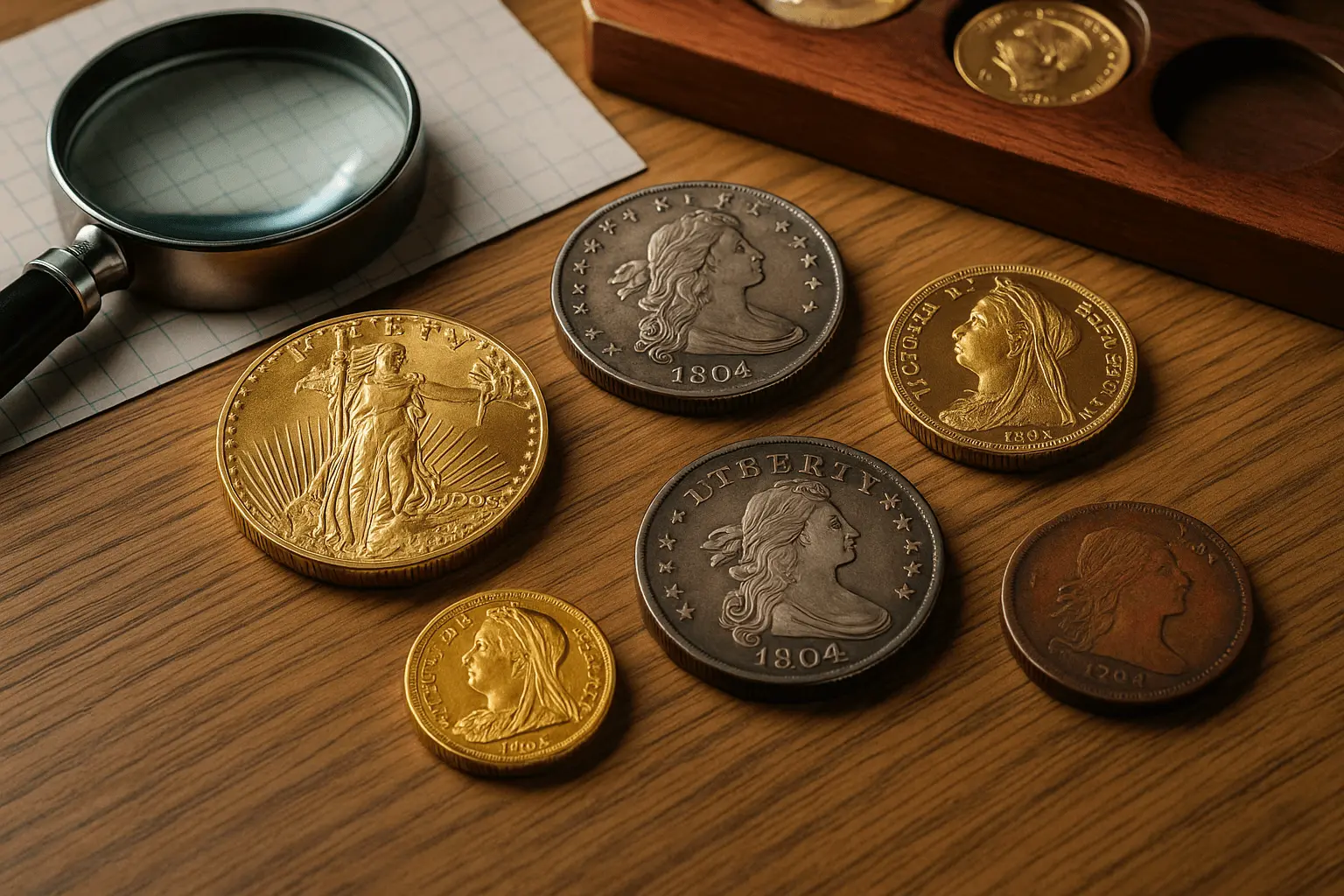5 Extremely Valuable Coins To Look Out For in 2025
In 2025, rare U.S. coins turn pocket change into fortunes. The 1943 Copper Penny ($100K-$250K+), 1955 Doubled Die Penny ($1K-$10K), 2004-D Wisconsin Quarter Extra Leaf ($150-$1.5K), 1982 No Mint Mark Dime ($200-$1.5K), and 2000-P Sacagawea Mule ($150K+) are top finds. Check coins for errors using a magnifier and apps like CoinScope. Get rare finds graded by PCGS/NGC.

In 2025, rare U.S. coins are skyrocketing in value, turning everyday pocket change into potential fortunes. These hidden treasures lurk in coin jars, cash registers, or even the loose change in your pocket, waiting to be discovered by collectors, investors, or anyone with a curious eye. Knowing which coins to look for could transform a single penny into thousands—or even millions—of dollars. Let’s explore five of the most valuable U.S. coins you might encounter in 2025, why they’re so prized, and how to spot them in your change.
1. 1943 Copper Lincoln Penny: The Holy Grail of Coins
The 1943 Copper Lincoln Penny is often hailed as the “holy grail” of coin collecting. During World War II, copper was critical for war materials like ammunition, so the U.S. Mint switched to zinc-coated steel for pennies. However, a few copper blanks from 1942 were accidentally used in 1943, creating one of the rarest error coins in U.S. history.
Why It’s Valuable:
-
Extreme Rarity: Only about 20 genuine examples are known to exist across the Philadelphia, Denver, and San Francisco mints.
-
Historical Significance: Its wartime origin ties it to a pivotal moment in history, adding allure for collectors.
-
Auction Power: These coins fetch $100,000 to $250,000 or more at auction, with a 1943-S example once selling for $1.7 million.
How to Spot It:
-
Magnet Test: Steel pennies are magnetic; copper ones are not. If a 1943 penny doesn’t stick, it’s a candidate.
-
Weight Check: Copper pennies weigh ~3.11 grams, steel ones ~2.7 grams.
-
Mint Mark: Look for “D” (Denver) or “S” (San Francisco) below the date; Philadelphia coins have no mark.
-
Authenticate: Counterfeits are common, so consult PCGS or NGC for professional grading.
In 2025, this coin’s value continues to climb as collectors chase its rarity and story.
2. 1955 Doubled Die Lincoln Penny: A Visual Masterpiece
The 1955 Doubled Die Lincoln Penny is a collector’s favorite due to its dramatic doubling effect on the date, “LIBERTY,” and “IN GOD WE TRUST.” This error occurred when a misaligned die was used at the Philadelphia Mint, creating a bold, visible mistake.
Why It’s Valuable:
-
Clear Error: The doubling is striking and doesn’t require a magnifying glass to see.
-
Collectible Appeal: About 20,000–24,000 were released before the error was caught, making it rare but findable.
-
Market Value: Prices range from $1,000 to $10,000+, with pristine examples fetching $25,000 or more.
How to Spot It:
-
Examine the Obverse: Look for thick, shadowed text on “LIBERTY,” “IN GOD WE TRUST,” and “1955.”
-
Circulated Coins: Most are worn but still valuable. Compare with images on PCGS or NGC websites.
-
Avoid Confusion: Distinguish from less valuable “machine doubling” by consulting an expert.
Its bold error and accessibility make it a top target in 2025.
3. 2004-D Wisconsin State Quarter (Extra Leaf Error)
The 2004-D Wisconsin State Quarter, part of the 50 State Quarters program, gained fame for an error where an extra leaf appears on the cornstalk. Two varieties exist: “Extra Leaf Low” and “Extra Leaf High.”
Why It’s Valuable:
-
Unique Error: Likely caused by a die alteration, it’s a modern minting mistake.
-
Market Value: Sells for $150 to $1,500, depending on variety and condition.
-
Modern Appeal: Its recent minting (2004) makes it findable in circulation.
How to Spot It:
-
Check the Reverse: Look at the cornstalk on 2004-D quarters for an extra leaf (up or down).
-
Condition: Uncirculated coins are worth more, but circulated ones still have value.
-
Mint Mark: Ensure it’s a “D” (Denver) coin.
This coin’s modern rarity excites collectors in 2025.
4. 1982 No Mint Mark Roosevelt Dime: A Subtle Treasure
In 1982, some Philadelphia-minted Roosevelt dimes were struck without the “P” mint mark, a rare error from a transitional year in minting.
Why It’s Valuable:
-
Minting Oversight: The missing mint mark creates rarity.
-
Market Value: Worth $200 to $1,500+, depending on condition.
-
Circulation Finds: Still possible to find in everyday change.
How to Spot It:
-
Inspect the Obverse: Check below the 1982 date for no “P” or “D.”
-
Condition: Uncirculated coins fetch higher prices.
-
Authenticate: Professional grading ensures authenticity.
Its subtlety makes it a thrilling find in 2025.
5. 2000-P Sacagawea Dollar + Washington Quarter Mule
This legendary error pairs a Sacagawea dollar reverse with a Washington quarter obverse, creating a “mule” coin.
Why It’s Valuable:
-
Extreme Rarity: Only a few dozen are known.
-
Unique Error: Combines two denominations, a dramatic mistake.
-
Auction Value: Sells for over $150,000.
How to Spot It:
-
Obverse vs. Reverse: Look for a Washington front with a Sacagawea back.
-
Mint Mark: Confirm the “P” (Philadelphia).
-
Authenticate: High value demands professional grading.
Its rarity makes it a dream find in 2025.
What Makes a Coin Valuable?
A coin’s worth stems from:
-
Rarity: Low mintage or errors like mules.
-
Condition: Uncirculated coins command premiums.
-
Historical Significance: Ties to events like WWII boost appeal.
-
Collector Demand: Trends on platforms like X drive prices.
In 2025, economic uncertainty and social media buzz make coin collecting a hot investment.
How to Start Checking Your Coins
No expertise needed! Try:
-
Tools: Use good lighting, a 5x–10x magnifying glass, and a scale.
-
Apps: CoinScope or PCGS CoinFacts for quick checks.
-
Compare: Match coins to images on PCGS or NGC sites.
-
Authenticate: Consult numismatists or grading services for rare finds.
-
Community: Join X groups or coin shows for tips.
In 2025, coin collecting thrives. Check your change—you might find a life-changer!







